Table of Contents
Overview – Airway Mucosa
The airway mucosa is a specialised lining of the respiratory tract that protects the lungs by filtering, humidifying, and clearing inhaled particles. Through mechanisms such as the mucociliary escalator and alveolar macrophages, the mucosa forms a critical barrier against pathogens and environmental debris. A clear understanding of airway mucosa is essential for interpreting respiratory physiology and pathologies like chronic bronchitis, asthma, and infections.
Clearance of Inhaled Particles
- Cilia in the nasopharynx:
- Beat backwards towards the pharynx
- Particles are swallowed
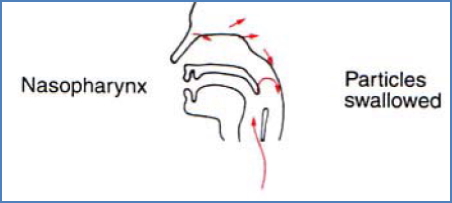
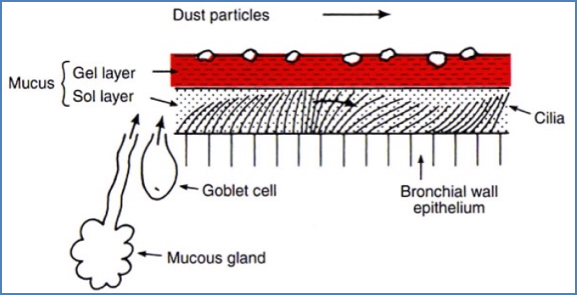
- Mucociliary escalator:
- Ciliated epithelium lines the conducting zone
- Goblet cells and submucosal glands produce mucus to trap particles
- Cilia beat upwards towards pharynx → swallowed or coughed out
- Ciliary beat cycle: power stroke + recovery stroke
- Mucus transport rate ≈ 1–2 mm/min
- Airway surface liquid layer (sol layer) critical for ciliary function
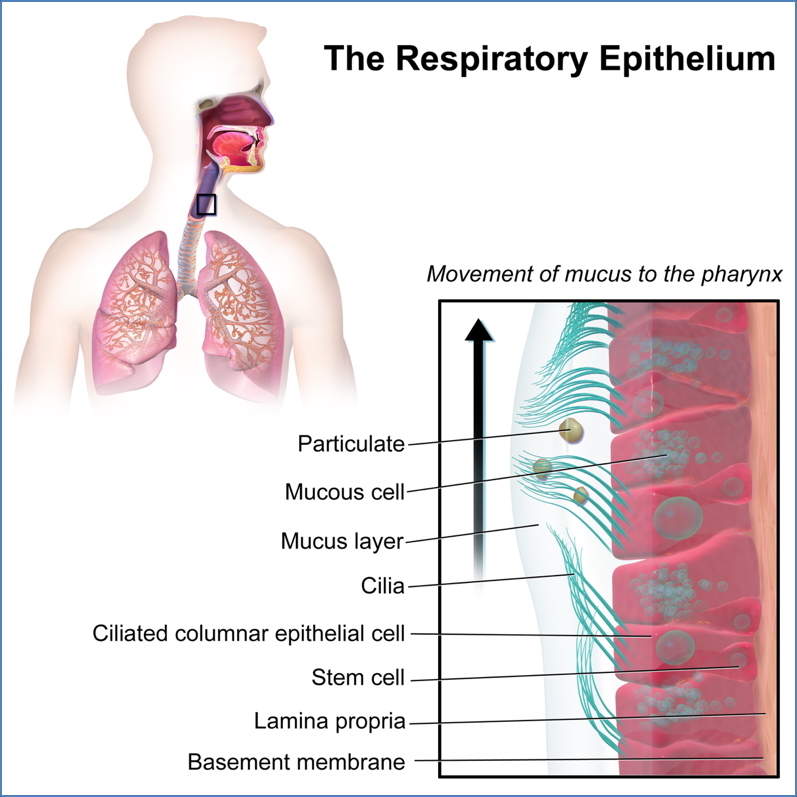
- Alveolar macrophages:
- Phagocytose particles and pathogens in alveoli
- Release destructive enzymes to degrade foreign material
- Dead macrophages may release enzymes → tissue damage
- Debris cleared via:
- Lymphatics
- Mucociliary escalator
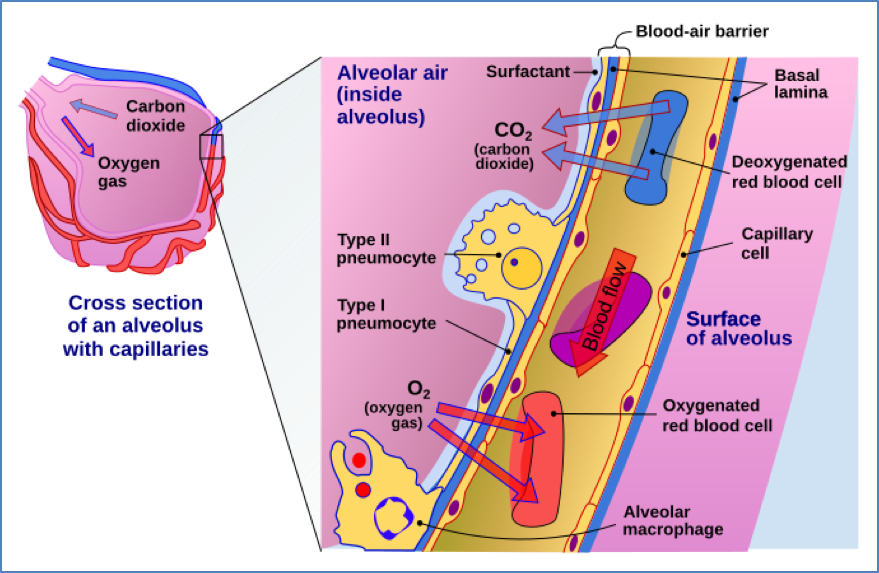
Mucosal Histology
Oropharynx & Laryngopharynx
- Lined with protective epithelium (mainly stratified squamous, suited for food passage).

Trachea
- Mucosa:
- Ciliated pseudostratified epithelium
- Goblet cells (mucus secretion)
- Lamina propria (dense elastic fibres, high elasticity)
- Submucosa: seromucous glands
- Adventitia: connective tissue, C-shaped cartilage rings, trachealis muscle (constricts trachea during coughing)
- Clinical note: trachea at highest risk of infection; many pathogens grow best at 33–35 °C
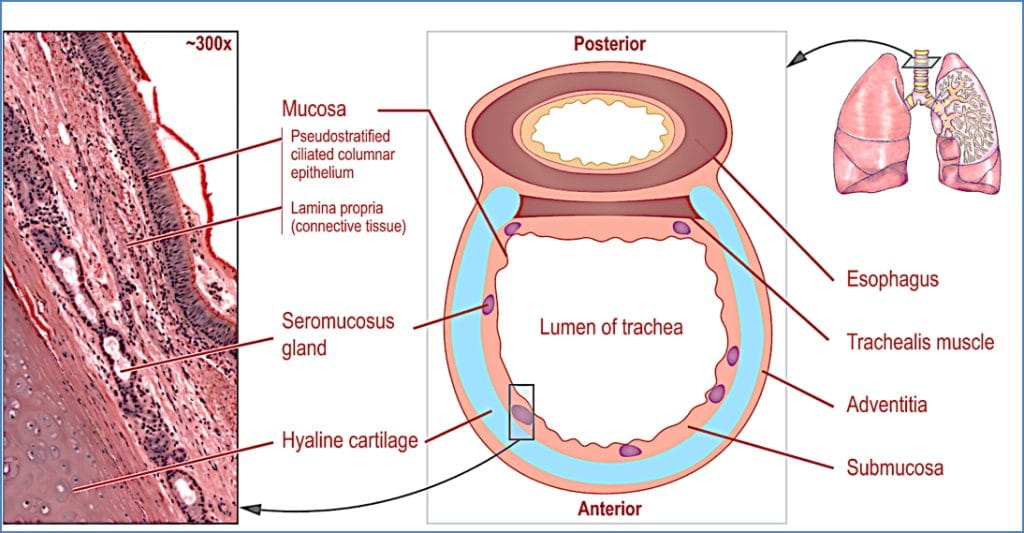
Bronchi
- Mucosa:
- Ciliated pseudostratified → ciliated columnar epithelium (in lower bronchi)
- Goblet cells produce mucus
- Progressive reduction in cilia
- Submucosa: seromucous glands
- Adventitia: irregular cartilage rings → cartilage plates; increasing smooth muscle content

Bronchioles
- Sparsely ciliated simple cuboidal epithelium
- No goblet cells
- No submucosal mucous glands
- No cartilage support (maintained by elastic fibres providing radial traction)
- Increased smooth muscle proportion
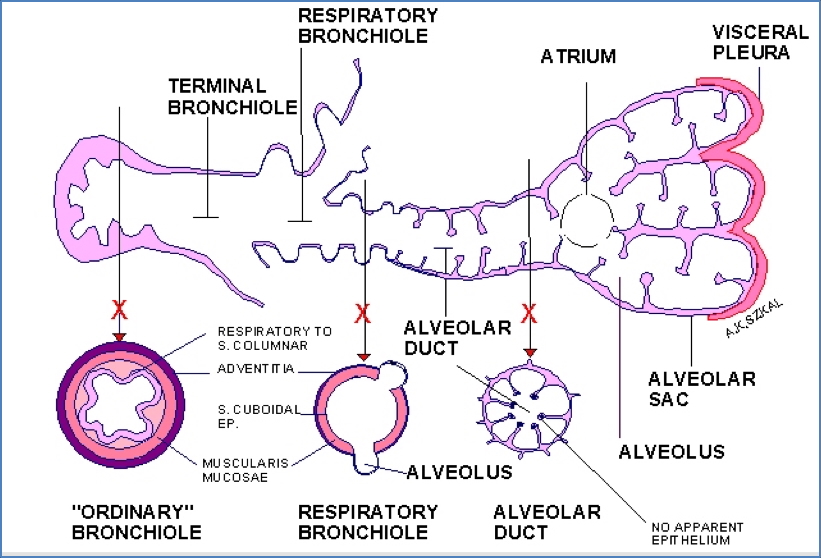
Summary – Airway Mucosa
The airway mucosa provides a defence system that filters, humidifies, and clears inhaled particles. Through the mucociliary escalator and alveolar macrophages, it protects the alveoli from debris and infection. Histological changes along the trachea, bronchi, and bronchioles adapt the airway to differing functional demands. For a broader context, see our Respiratory Overview page.